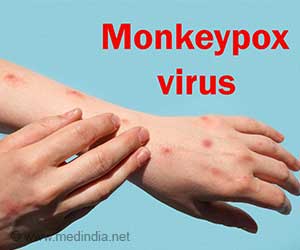Detecting viral DNA in monkeypox patients’ rooms does not prove that infection can occur after contact with the surfaces.

‘Using products with at least virucidal activity against enveloped viruses such as the Monkeypox virus can reduce infectious virus on surfaces and thereby the risk of nosocomial transmission.’





While virus transmission between humans has been described previously, data on environmental contamination of surfaces are rare.Environmental Sampling In-Patient Rooms
Researchers swabbed surfaces in the immediate and adjacent rooms of two hospitalized monkeypox patients in Germany. The patients’ isolation rooms were separated from the ward corridor by anterooms, where hospital staff put their protective equipment on and off (donning and doffing).Contamination with up to 105 viral copies/cm2 on inanimate surfaces was estimated by PCR and the virus was successfully isolated from surfaces with more than 106 copies. Fabrics such as towels, shirts, or pillowcases that the patients used frequently also showed viral contamination.
Viral Contamination Does Not Equal Infectious Virus
The authors highlight that there currently are no definite data on what dose of virus leads to infection with monkeypox in humans. However, assumptions are that it requires a significantly higher dose to trigger infection than for example Variola virus.Despite high contamination with up to 105 cp/cm2 as well as the successful recovery of monkeypox virus from samples with a total of >106 copies, our findings do not prove that infection can occur from contact with these surfaces.
Prevention of virus spread from symptomatic patients should be individually adapted. Regular and frequent disinfection of hand and skin contact points during the care processes in addition to regular room cleaning and surface disinfection is required.
Advertisement









